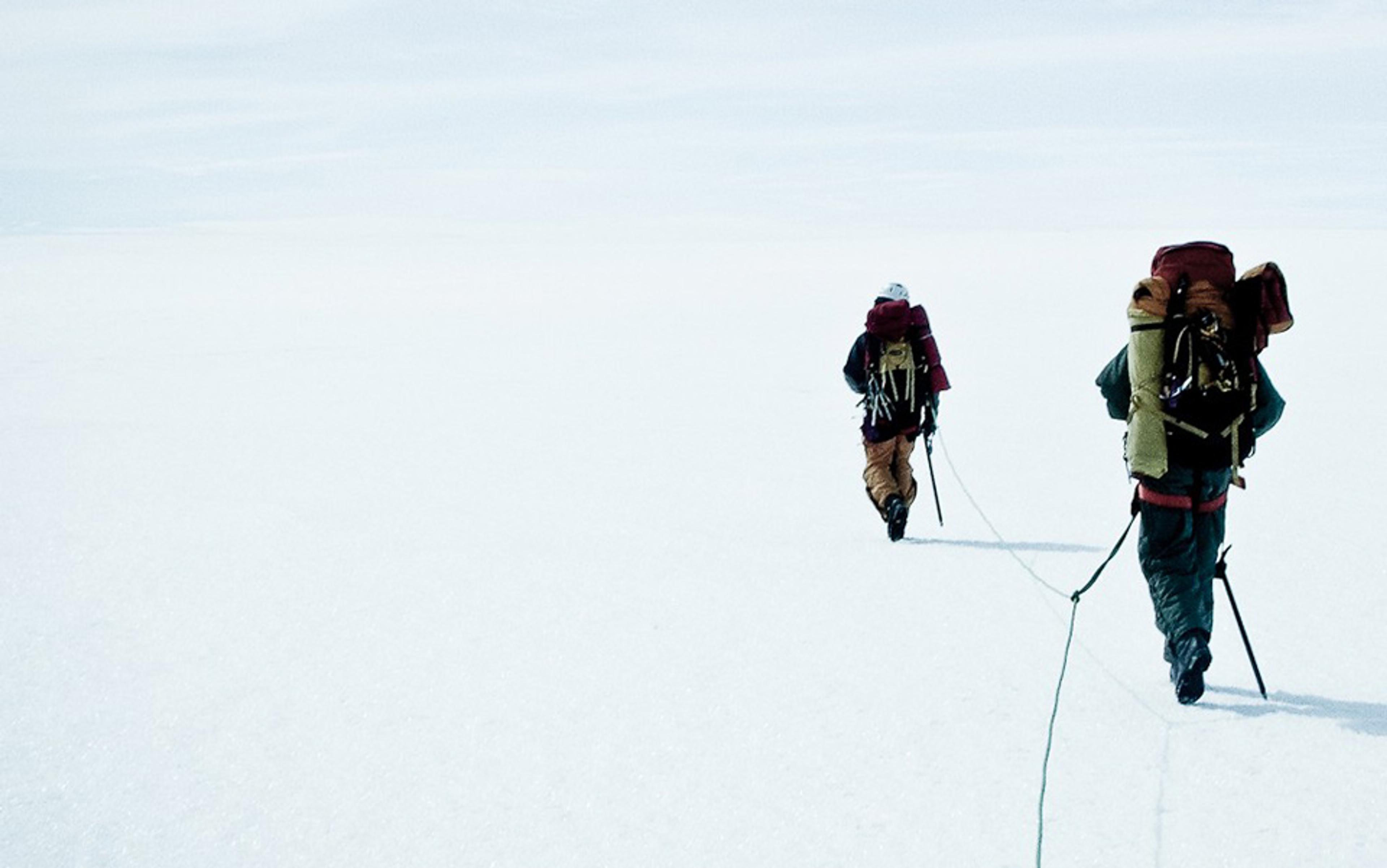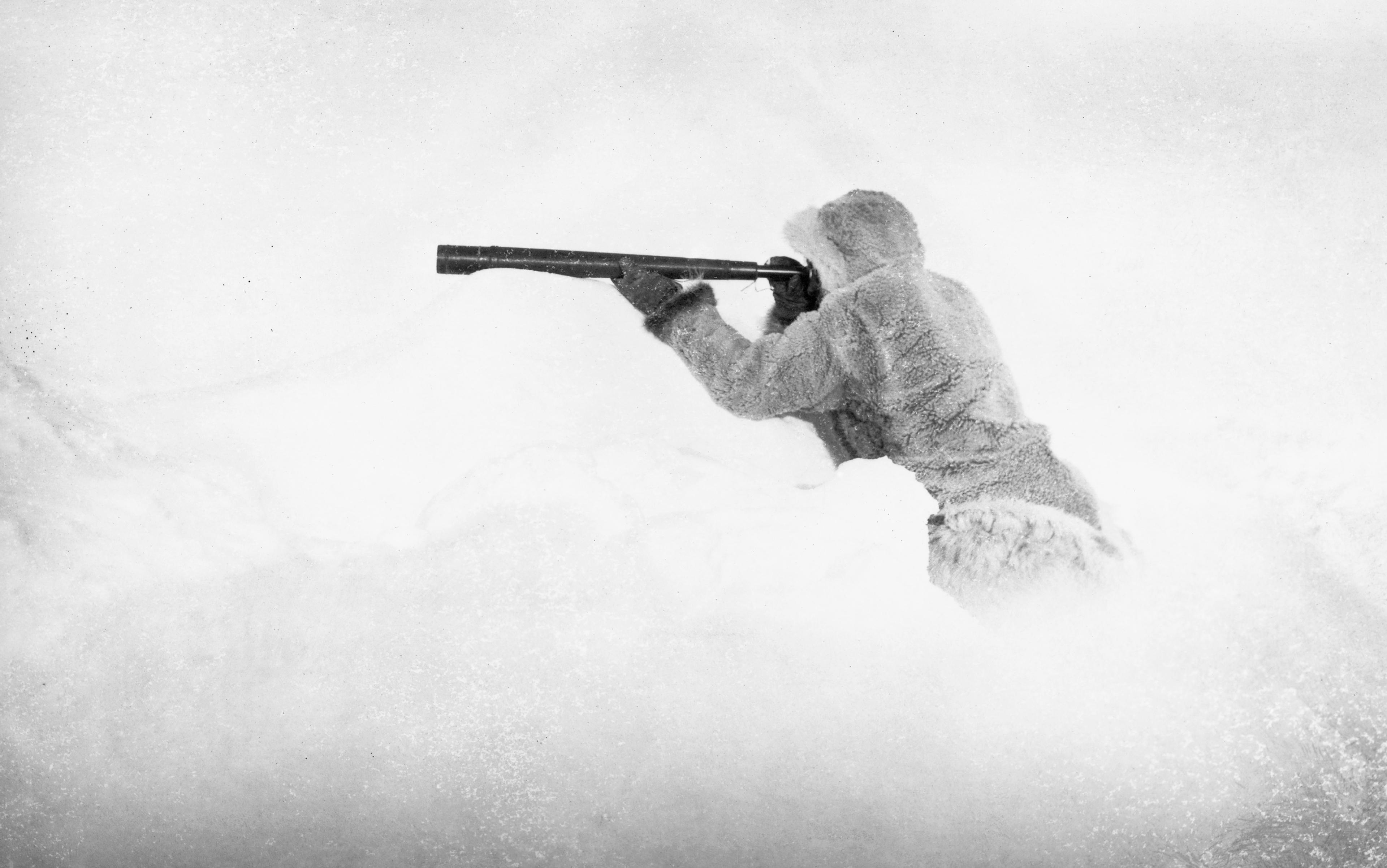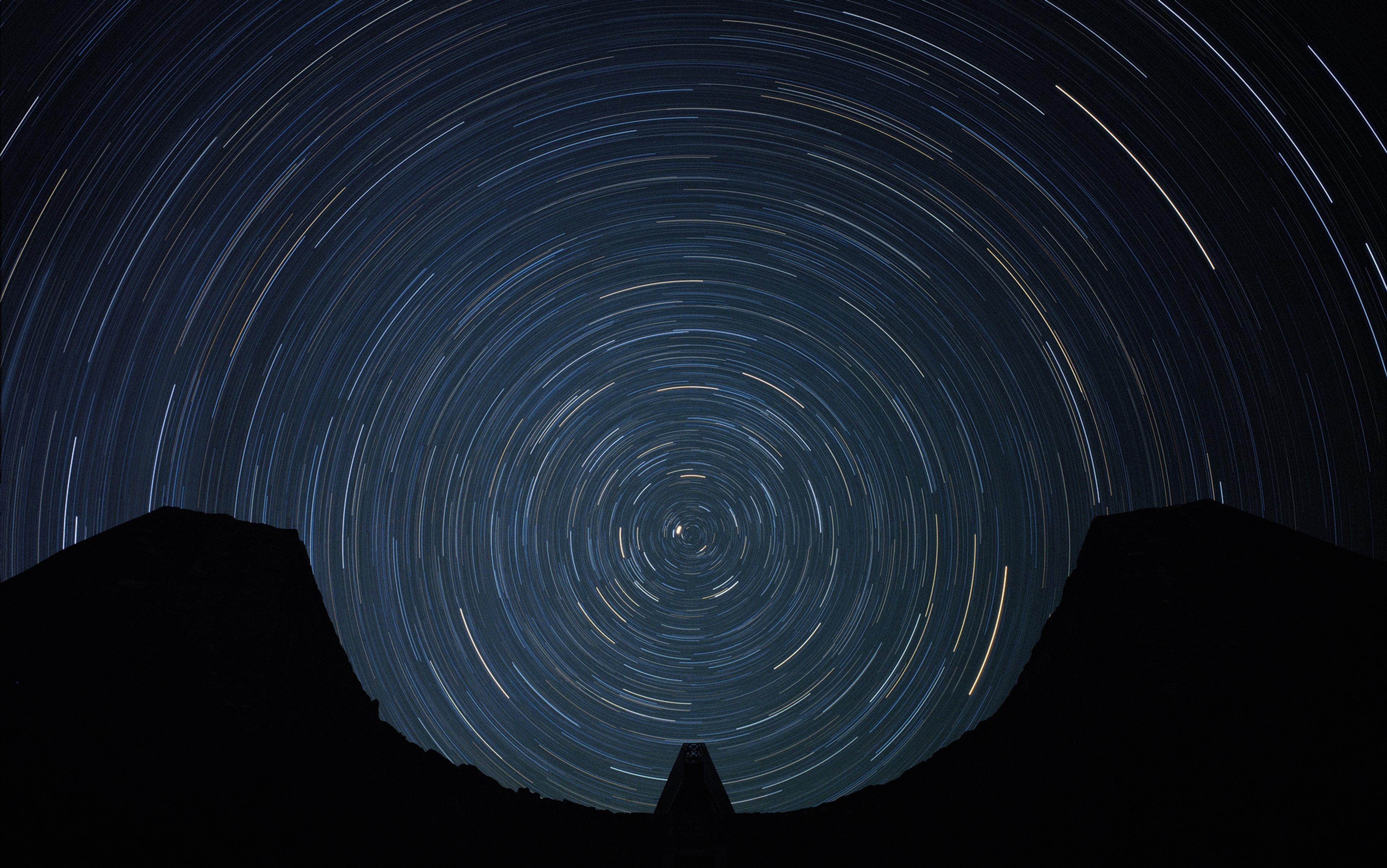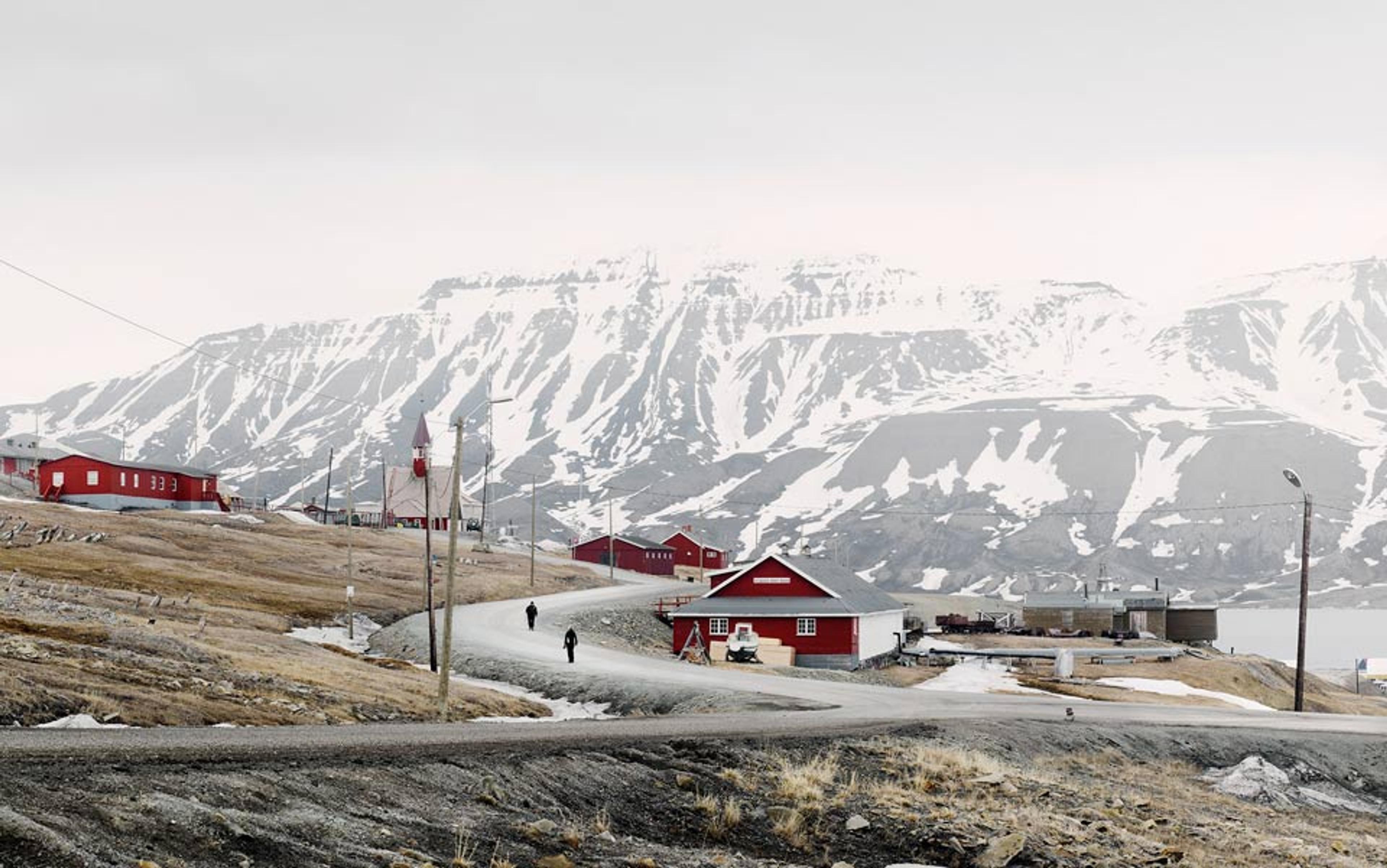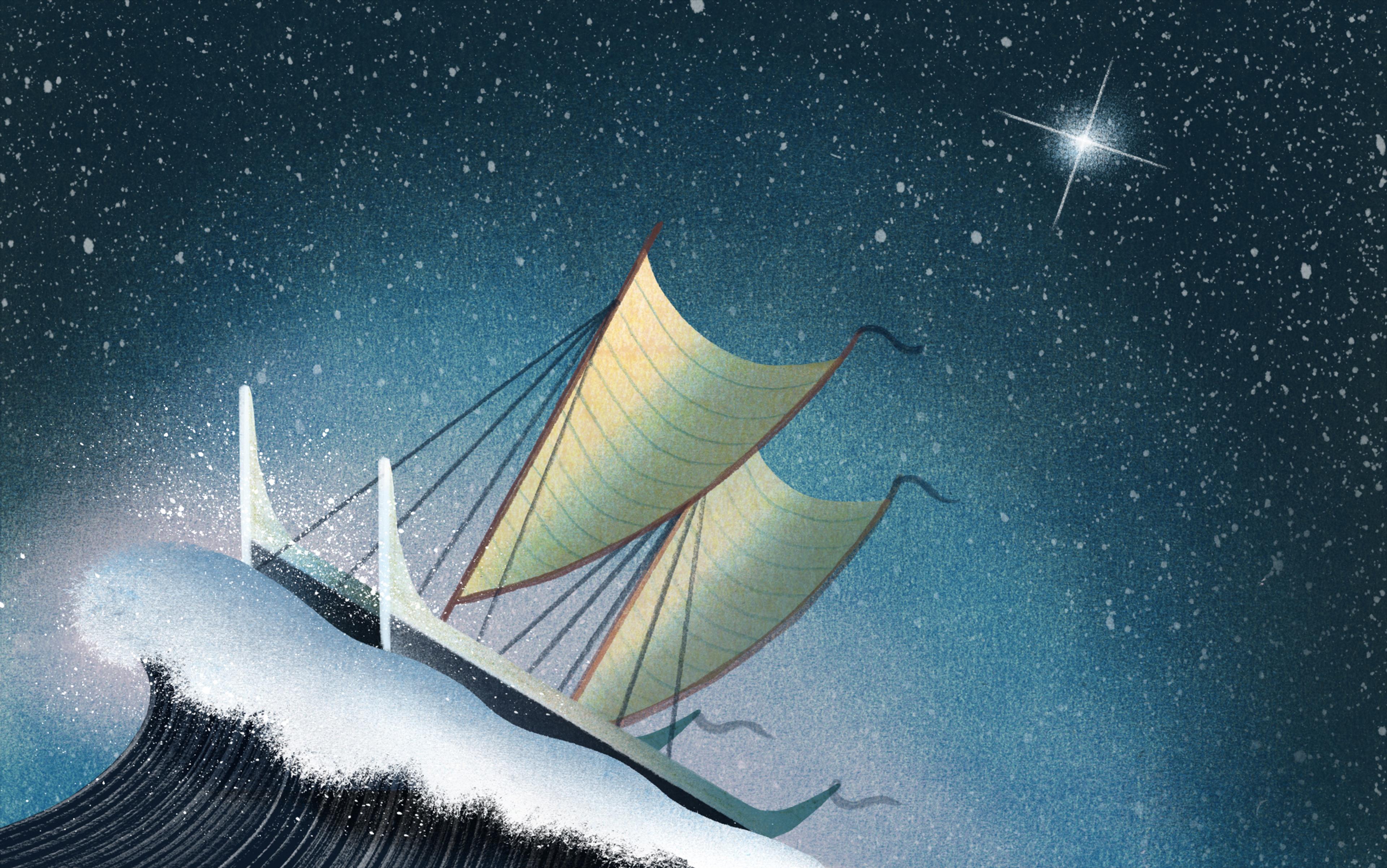I had not intended to go to the end of nowhere. Even by Antarctic standards, Dome C was the back of beyond. But one afternoon, while fumbling with gear in a McMurdo warehouse, I overheard an allusion to ‘the source regions’. The technicians used the term casually, discussing what goods would be shipped to a remote camp well over the Transantarctic Mountains. But in my mind the phrase sparked an epiphany of symbolism. The source regions. Here was the geographic place at which the East Antarctic ice sheets gathered and then flowed outward. Here was a place that took nothing from elsewhere save fugitive water vapour and turned it into Ice. I had come here to understand Antarctica, by whatever means I could. Surely that quest demanded a journey to the source, for it must certainly contain the essence of the Ice. So after a trip to the National Science Foundation chalet where I pleaded my case, and then a layover at the Pole, adapting to high elevation, I stepped off an LC-130 (‘The Antarctic Queen’) on a dazzling 1981 New Year’s Eve at Dome C and found myself at the end of the world.
Antarctica is a place only an intellectual could love. The further one moves into the interior, away from the coast and storms and marine life that tenuously valence with the Earth, the more dominant the ice and the more extraterrestrial the surroundings. The commonsense perspective of ordinary people is that there is ‘nothing there’, and they are almost right. Even scientists in keen pursuit of data, precious by being rare — our age’s equivalent to the spice and bullion that inflamed early explorers — find Dome C extreme. The rumour soon spread on site, originating from a knot of geophysics graduate students from Wisconsin, that we were not in Antarctica at all but had been secretly drugged on the plane and taken to a prison camp in Minnesota.
Consider the geographic facts: Dome C is an infinitesimal rise in the East Antarctic plateau, atop 14,500 foot of ice that extends outward hundreds of miles. There is little else. This is the most singular environment on Earth, a synthesis of the huge with the simple. Space and time dissolve. The cycle of days and those of seasons collapse into a single spiral. The energy budget is always negative; none during the dark season, reflected away during the light. There is no life. There is nothing to live on. Here is Dante’s imagined innermost circle of hell as an inferno of ice. Here is the Earth’s underworld.
It is a scene of absences and abstractions. There are no mountains, valleys, rivers, shores; no forests, prairies, tide pools, corn and cotton fields, sun-baked deserts; no hurricanes, no floods, no earthquakes, no fires. The only contrast is between an ice-massed land and an ice-saturated sky. The descending ice that links them — the ultimate source of the dome — has the purity of triple-distilled water. Yet it too, as with everything else, simplifies into its most primordial elements, as snowflakes crumble and fall as an icy dust. There is no centre and no edge. There is no near or far; no east or west; no real here or there. Words, too, shrink and freeze, as language and ideas shrivel into monosyllables: ice, snow, dark, sky, blue, star, cloud, white, wind, moon, light, flake, cold.
Consider what that does to experience, to mind, to self. Like the flakes disintegrated into slivers of crystal, a mounding of ice dust, the self disaggregates. Your self is not an essence, but the compounding sum of your connections, like snowflakes elaborating uniquely. At Dome C every particle of ice is identical.
The camp was temporary — how could it be otherwise? Here, where the ice thickened on a continental scale, is an ideal setting for deep-core drilling. Exploratory flights three years earlier had resulted in a crippled LC-130, when a taxiing plane had cracked a wing. Another ski-equipped Hercules was dispatched to remove the crew, only to add to the crisis when a jet-assist take-off bottle that was needed to add thrust in the thin air broke loose on take-off and ripped through a wing. A third flight rescued the stranded crewmen. The next year a temporary camp of Jamesway huts arose while crews repaired and flew out the planes. The huts became the core of an ice-prospecting camp. A small cadre of French glaciologists sat in their self-proclaimed cage aux folles and sank their coring shafts. Smaller cliques of Americans hand-drilled for shallow cores and blasted for seismic profiles that revealed an ice sheet roughly 14,500ft (4.23 kilometres) deep. A nose-cone from one of the former LC-130s, like a cannon on a village green, greeted newcomers.
In all, there were a dozen of us that year; the French, the American teams, a cook, a couple of Navy mechanics. But there was little that one might consider a society, any more than there was anything one might consider a built village or even a shanty town. We lived in a tiny boulevard of the Jamesways — canvas-walled, wooden-floored Quonset huts dropped like lumps of glacial erratic on an ice dome taller than Mount Whitney and wider than Australia. Apart from them, and what we brought to stuff in them, there was little from the unblinking outside world by which to order the inside world at Dome C. Nothing in nature, nothing in culture, only the fortnightly visit by a Navy Hercules. While the sun slowly spun above the horizon, teams came and went as their work called, or they felt an urge. There was no common dining, no collective experience, nothing that anyone had to do at any one time. The sole exception was the arrival of new movies with each resupply flight. These were watched obsessively until the cache was exhausted, at which point Dome C’s social order again dissolved.
A naive observer might rejoice in the near-absolute freedom allowed by a near-absolute abolition of mandatory order. But that nominal freedom is only another name for anomie. Freedom is relative: it requires coercion of various sorts in order to have meaning. At Dome C there was nothing to rebel against. You could do whatever you wished. The catch was, there was almost nothing to do. Those with complex projects, originating from the outside, survived better than those without. But like food brought in, the project exhausted itself with use, and as the ice inevitably ablated these away, their practitioners survived by departing. No one lived at Dome C. Those who stayed longest sank into various pathologies. The Big Eye, or insomnia: I went on a 24-hour cycle of wakening followed by 12 hours of sleep. The Long Eye: aptly defined as a 12-foot stare in a 10-foot room. You slowed down. With little to stimulate you, there was no reason to busy yourself. Stay for long, and a state of semi-hibernation set in. Stay too long, and you found yourself dissolved in a psychic white-out with the Ice.
The Barrier Ice is a term derived from James Ross’s 19th-century expedition to the eponymous Ross Sea, and originally it referred to the (also eponymous) ice shelf — that vast floating delta of glacial ice, as vast as Texas or France — that fronts the sea like the White Cliffs of Dover. The Barrier is an ice shelf on the edge of the continent that collects the flow of glaciers passing through the Transantarctic Mountains and the buried icemounts of Byrd Land and then disperses it to the sea as ice islands and plateaus. The Source region take the frontier further. They gather nothing save snow dust from the sky. They contribute only ice.
The looking-glass self dissolves into an ice mirror
Across the Barrier, in the interior of the continent, life ends. It can exist for skuas only by flying over and back to the sea, or for humans, by sledging in and returning. The Ice beyond is a wholly abiotic environment. Its energy flux is ever negative, it lacks flowing water, it is void of nutrients. There are not even rocks that might, in principle, disintegrate into a substratum of raw elements. One molecule dominates — hydrogen dioxide. There is one unblinking scene — a sheet of ice. Oxygen abounds, so one can breathe, but there is nothing else to support organisms. People can live only through umbilical cords and IV drips to a sustaining society well beyond the reach of the ice. Left to itself, life feeds off itself, and then shrivels.
The ice sheets are acultural, too. There is no basis beyond the Barrier for norms of social behaviour or sources of knowledge, other than those we import. There is no prospect for an Antarctic explorer to recapitulate Alexander von Humboldt’s ecstatic contact with the Venezuelan jungle, picking up one new specimen, only to drop it for another, and another. There is no engagement with indigenous peoples as guides, interpreters, and collectors, or any means to go native and immerse oneself into another moral universe. To reach the North Pole in 1909, Robert Peary adapted Inuit sledges and dogs, and relied on native sledders; to reach the South Pole in 1912, Robert Scott’s Polar Party pulled their own sledges.
With ever-dwindling social entities — the sledging party is less synecdoche than symbol — there are few opportunities for the kind of contrast and conflict that drives literature, and scant scenes ready for the visual arts. When he learnt that he would not join Scott’s Polar Party in 1911, Herbert Ponting, the expedition photographer, decided it was probably for the best. Other than portraits, there would be ‘nothing’ to photograph. Beyond the Barrier, even intellectuals struggled to find sustenance; they relied instead on the elaborate cultural baggage they brought with them to create comparison, contrast, and context, without which their minds would find nothing to grasp. Antarctica became known less for what it was than for what it was not.
The classic photography of Antarctica is thus not a photography of the source but of the Barrier — the edge, where ice meets sea, rock, and sky, where life pokes and flaps and swims, where things move and sounds echo. Beyond the Barrier lies a nature like a modernist painting; abstract, conceptual, minimal. The literature of Antarctica is likewise not a record of social exchange or innovation or surprise but a chronicle of diaries and soliloquies, the self withdrawn, drafting from its own reserves for its sustenance, like a camel on its hump. It thrives on whatever it has stocked from elsewhere. Over and again, literature recycles the same stories: those Antarctic archetypes are not only all that exists but perhaps all that can exist. The opportunities for endless variants simply aren’t present. Instead, imaginative literature turns to fantasy and science fiction, a realm beyond reason and empiricism, a dominion as intrinsically blank as the ice sheet. What the ice has done to landscape, it does to society, and hence to the social imagination of art. All that remains are ideas.
Around Antarctica’s periphery, ice meets sea. Along its mountain borders, ice meets rock as glaciers grind through coarse passes before merging and then passing to the Barrier. On both fronts, sea and land, the grand ice sheets have their geographic frontiers. But the Source does not. There is only that sharp trace between ice and sky. What makes Antarctica what it is, its ice, is here distilled into ice alone, and what makes the Source region unique, both sublime and nihilistic, is that here ice works self-referentially even upon ice. Here in the centre nothing holds because there is nothing to do the holding and nothing to hold. There is no Barrier: there is almost nothing at all. At the Source it becomes clear just what the Ice does. It simplifies. It takes, it reduces, it reflects.
That geo-social nihilism ablates away anyone exposed to it for any length of time. The protective shields of food, portable energy, memories, and tasks brought in from elsewhere gradually sublimate. The wise leave before their imported stocks are exhausted. The foolish or the unlucky must watch their self exposed only to the ice, which is to say, to attrition. There is not enough on site to generate the contrasts that allow ideas to arc between them. Yet the self can only exist — can only be felt and known — in contrast to an Other. At the source there is no Other. There are no other creatures, no other environs, no other emblems of a world beyond. There is no basis for meaning. There is only ice.
I craved contrasts — the darkness that I had not known for three months, the flowing water I had been denied, the aromas of plants
When the American explorer Richard Byrd attempted to live alone for a winter in 1934, creating a kind of Antarctic Walden 150 miles away from his Little America base, the experiment went bad. He became hallucinatory, suffering a kind of dementia, before the experience nearly turned lethal. The official explanation was carbon monoxide poisoning from a faulty stove, but the truer answer might be the folly of trying to simplify existence amid what was already so simple as to belong on a moon of Saturn. Survival required exactly the opposite strategy. It demanded complexity, sensory overload, a Victorian museum cluttered with bric-a-brac rather than a spare, wooden shack. Otherwise, society breaks down to a self, and the self has no societal reflection by which to know its place and recognise its traits. The looking-glass self dissolves into an ice mirror.
It did for me. Unlike those I travelled with, I had no specific task at Dome C, no experiments to perform, no drill to sink, no samples to collect. I did not arrive, do my job, and depart. I stayed for a full austral season on the Ice, attaching myself like a lamprey to whatever larger enterprise I could find. There were often occasions where I simply waited. I had no shield between me and the ice, save what I brought by way of books and ideas. I had no forced busyness to insulate me against the sapping cold. There were no intrinsic stimulants from the outside. Gradually, the realisation sank in that Antarctica did not offer a unique experience so much as the experience of having the familiar world removed. It was a place of things that should be there and weren’t. It lacked that quantum of complexity without which culture cannot work. Living there was a process of social reductionism that led to a cultural numbing, a mental hypothermia. Antarctic was the sum of its losses.
When I returned to McMurdo, I began regaining my senses, and when I reached Tierra del Fuego, I savoured smell and sound in a landscape lush with life and colour, though one that the rest of Earth had long dismissed as depauperate. I craved contrasts — the darkness that I had not known for three months, the flowing water I had been denied, the aromas of plants. At home, I rejoiced in every sensation. The most mundane object and sentiment felt keener. The rustle of wind through trees. The odour of animals. The bustle of an airport. The taste of tomato. The touch of family. Even, since it was the boreal winter, the sight of snowflakes, like filigree webs, on a windowsill.
But I carried away also an understanding that made Dome C the ineffable as palpable as a granite outcrop. After nothing, everything seems sublime.
